25 Different Types of Hardwood Trees (With Pictures)
-
Chris Dinesen Rogers
- Last updated:

It is hard to imagine any material that has proved so useful in so many ways as trees. They’ve sheltered us, provided food, and kept us warm. They’ve even entertained us by being made into baseball bats, hockey sticks, and works of art. Early archaeological evidence of these plants goes back to the Early Devonian Period between 397–407 million years ago1.
There are over 60,000 tree species in the world. The United States has over 950 tree species3, of which 1224 are conifers or softwoods. These figures represent the vast diversity of these plants. The trees listed in this article of hardwood trees include many of the most familiar types. Hardwoods and their products contribute over $348 billion to our economy, making them invaluable natural resources.
The 25 Different Types of Hardwood Trees
1. Oak
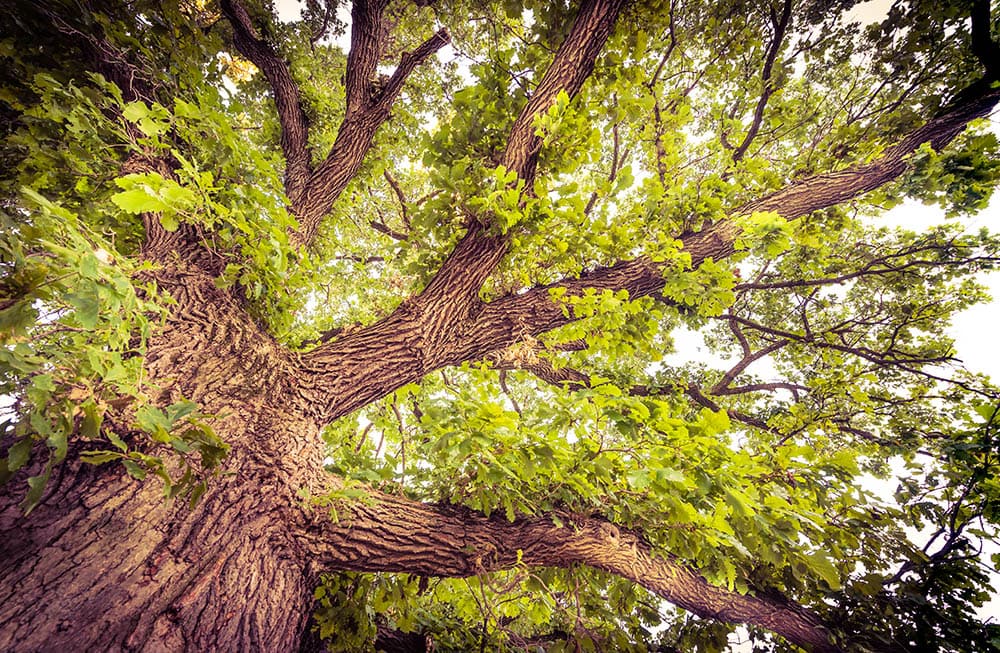
There are 460 species of oaks or species of the genus Quercus in the world. They are long-lived plants with some of the strongest and densest wood of any other tree. That’s one reason why people prize oak furniture so much. It has other diverse uses for products, such as wine barrels, construction projects, and fuel. Oaks also produce a reliable food source for wildlife like deer, turkeys, and ducks.
2. Maple
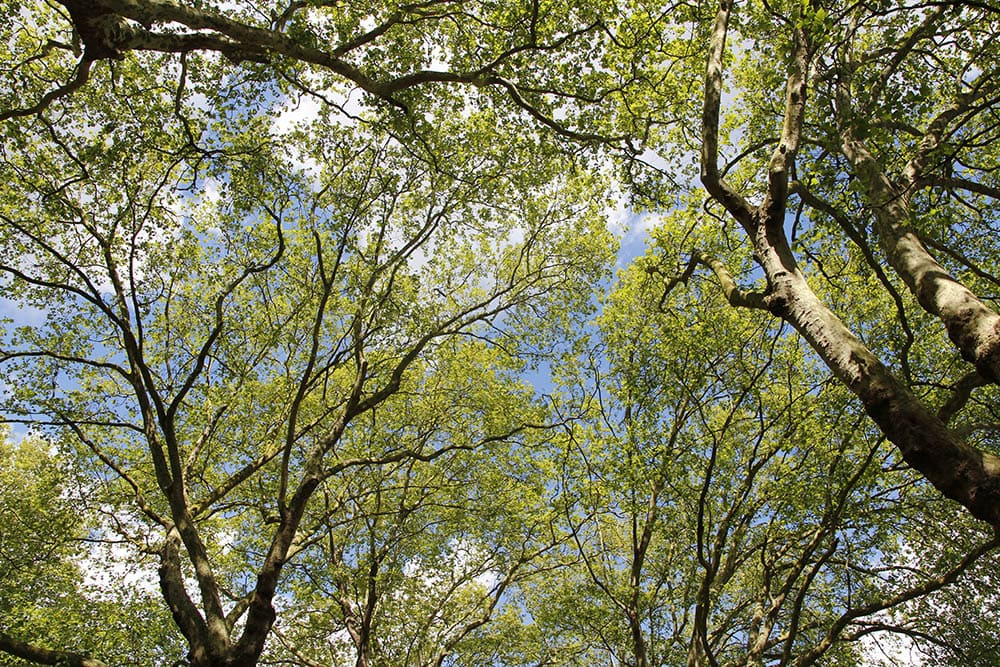
Maples belong to the genus Acer. These trees are synonymous with beauty, whether it’s the gorgeous wood, the expertly crafted bonsai, or the jaw-dropping fall colors. That’s saying nothing about the tasty syrup and the stunning cultivars that figure prominently in many landscaping designs. Maple trees also have a musical side that makes their voices heard with guitars, drums, and woodwind instruments.
3. Ash

Ash trees are members of the Fraxinus genus found throughout North America, Europe, and Asia. The wood is strong, making it an excellent choice for baseball bats, bows, and fence posts. Unlike oaks, these species don’t contain tannins. However, they are also vital plants for wildlife. Unfortunately, pests have taken a toll on the population, primarily the emerald ash borer.
4. Aspen
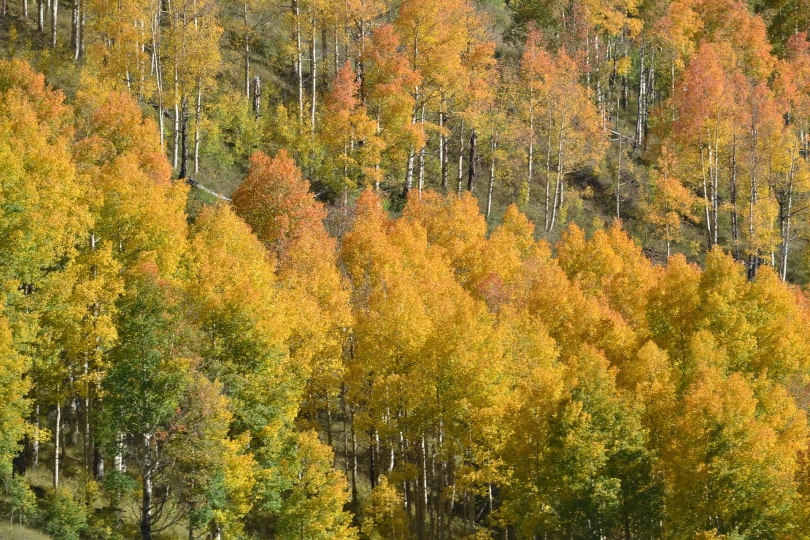
The Quaking Aspen and the Big-Toothed Aspen are the two native species of the United States. They are cold-tolerant and well-suited to the cooler parts of the country. Its main uses are paper, animal bedding, veneer, and boxes. These trees produce durable wood that is lightweight and straight-grained, making it an excellent choice for these products.
5. Poplar
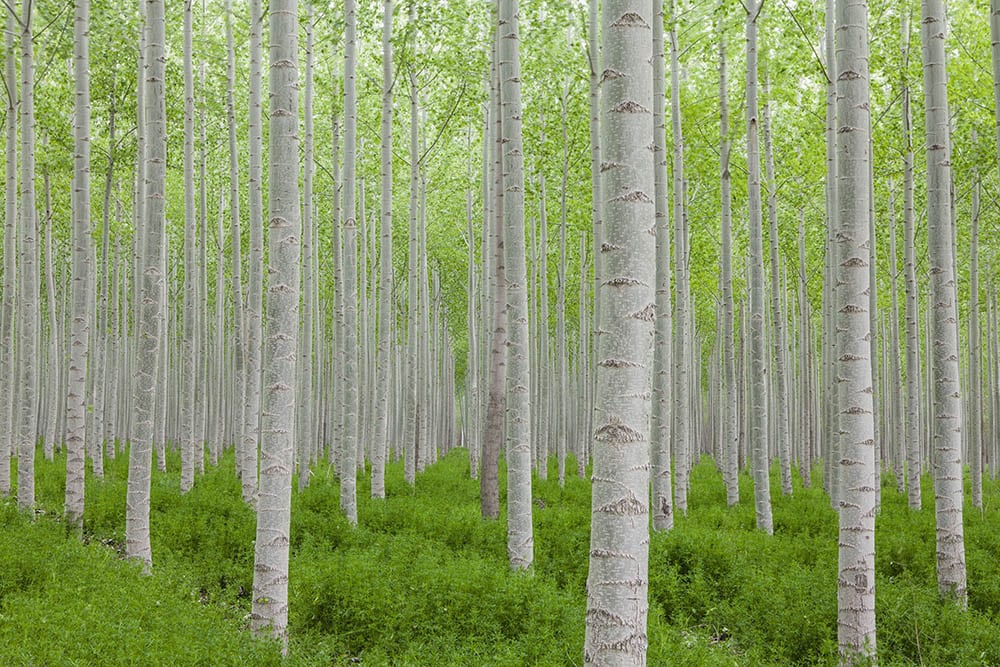
You may sometimes see aspens referred to as poplars. However, they are different species altogether, although they are related. For example, the Balsam Poplar is a widespread tree found throughout the northern half of the United States and north into Canada. Another common variety is the White Poplar, mainly used for landscaping because of its attractive silver-colored leaves.
6. Buckeye
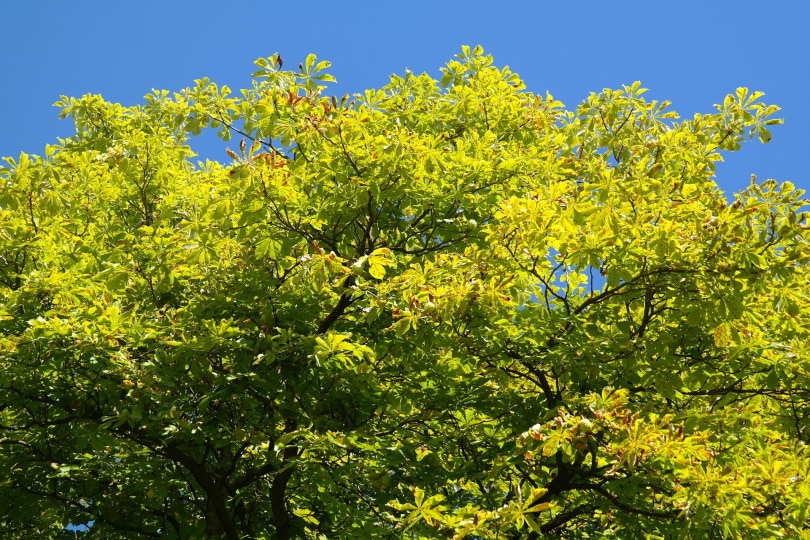
Buckeyes are good-looking trees with beautiful flowers that provide aesthetic value. The wood is relatively soft, making it a better choice for paper pulp than other uses. You may also hear these varieties called horse chestnuts. As the name implies, they provide nuts for wildlife. Buckeyes also are the namesake for Ohio State University with its mascot, Brutus Buckeye.
7. Willow

Willows prefer to keep their feet wet in the soils of lowland areas and wetlands. Perhaps the most popular example is the Weeping Willow with its lush foliage. Interestingly, the bark of these trees contains an extract called salicin, a precursor to aspirin. That helps to explain the long history of folklore use for pain relief.
8. Elm
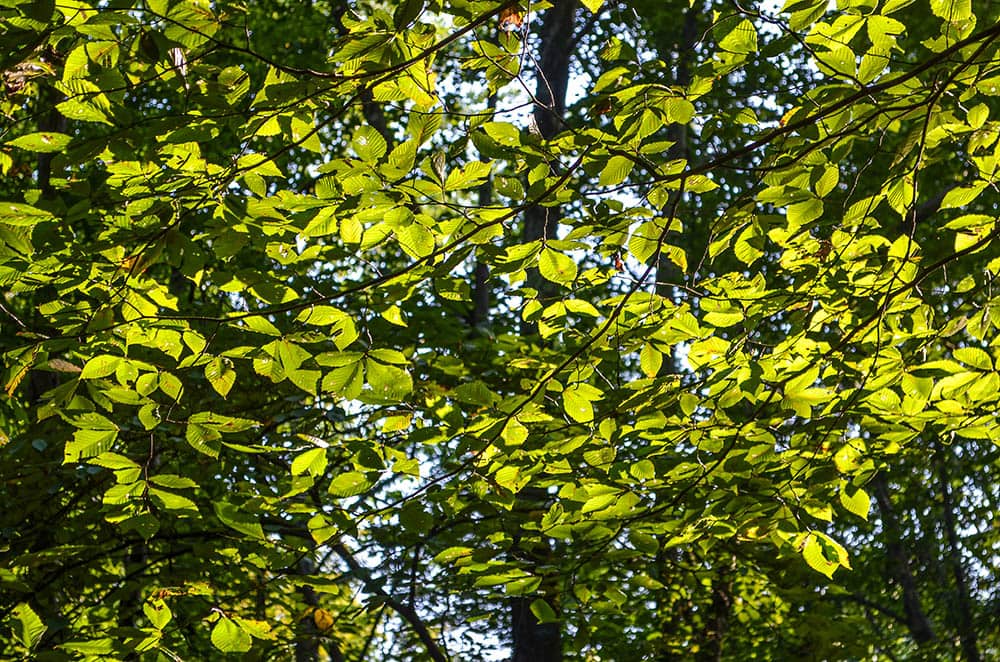
One of the primary uses for elm trees is for landscaping. They are attractive species with several cultivars that have increased their tolerance for disease and challenging environmental conditions. The wood is heavy and strong, making it an excellent choice for tools and ship-building. Dutch elm disease threatened the entire population, but hybrids and selective breeding saved it from the fungus.
9. Locust

Locust trees prefer disturbed ground in thickets, often along roadsides. Some species also live in moist bottomlands. The wood of these trees is hard and heavy. Unfortunately, that doesn’t compensate for their negative impacts. Several states, including Minnesota and Michigan, have classified the Black Locust as an invasive species because of its aggressive growth pattern.
10. Hickory
The primary value of hickory trees is as a food source for wildlife and humans. A related species, the Pecan, offers economic benefits, too. The hard, strong wood of these varieties makes them an excellent choice for various uses, from fuel to tool handles. Many species are shade-tolerant and found in nutrient-rich woodlands and bottomlands.
11. Eucalyptus

The Eucalyptus group contains many popular species, including Mountain Ash and Alpine Ash. The genus is relatively large, with many varieties found across the globe. They are some of the most well-adapted plants on the planet, with essential traits such as fire resistance. This genus has its main stronghold in Australia.
12. Cottonwood
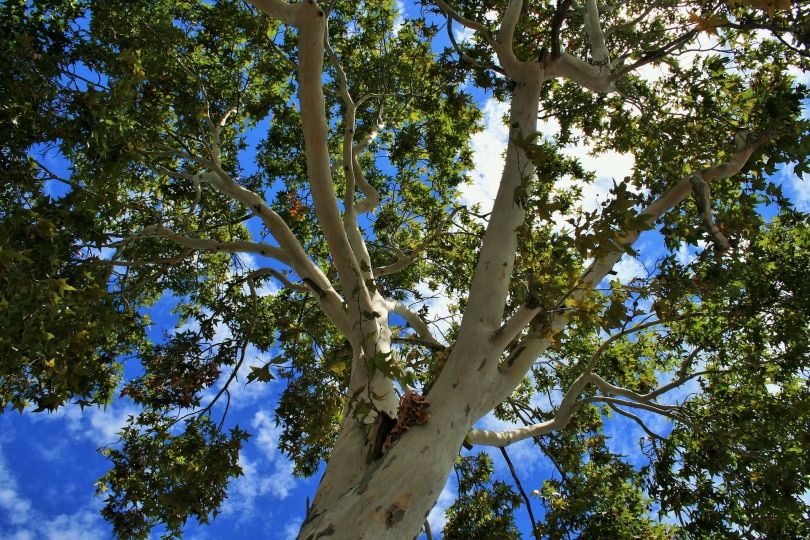
The Cottonwood has some related species on this list, including willows and poplars. These trees live in moist soils along streams and water bodies. They have a commanding presence, with heights topping 100 feet or more. Its cotton-like seeds give its name. Its wood isn’t particularly valuable because of its softness. The primary use for cottonwoods is pulpwood.
13. Chestnut
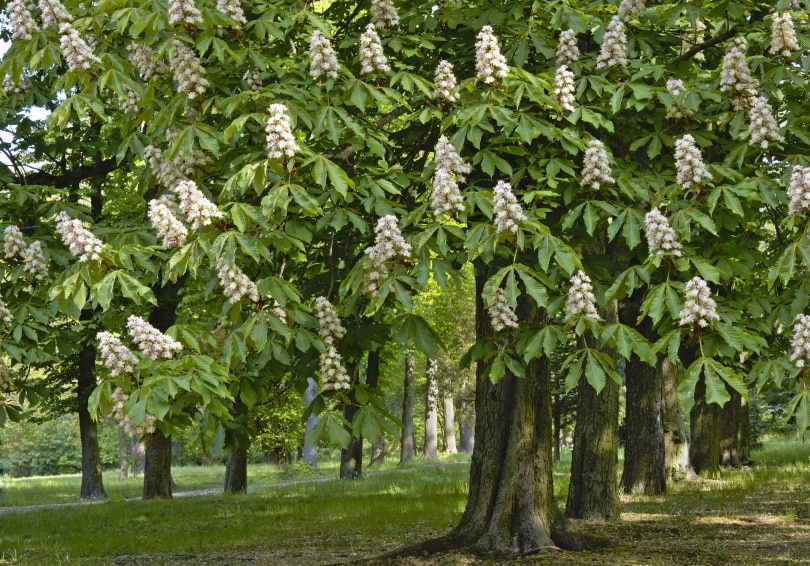
The American Chestnut is a stellar example of this group, although it was nearly wiped out in the early 20th century by disease. Its wood is an attractive reddish-brown color used for furniture making. However, at one time, it had a very different purpose for wooden sidewalks. Its decay resistance and strength made it an ideal choice until the chestnut blight ravaged the country.
14. Osage Orange
There is only one species in the genus, Maclura, the Osage Orange. It’s also called Hedge Apple after the large fruits it produces, although few animals eat them. The wood is quite strong and has been a popular choice for bows. The trees form dense clusters, making them the perfect choice for hedgerows and windbreaks. It is only native to Arkansas, Texas, and Oklahoma.
15. Basswood
The term Basswood refers to the North American varieties of the genus Tilia. They are beautiful trees with striking profiles, heart-shaped leaves, and fragrant flowers. It’s no wonder that they appear in American yards as ornamental additions. The wood has limited uses for window treatments, guitars, and woodwind instruments.
16. Dogwood
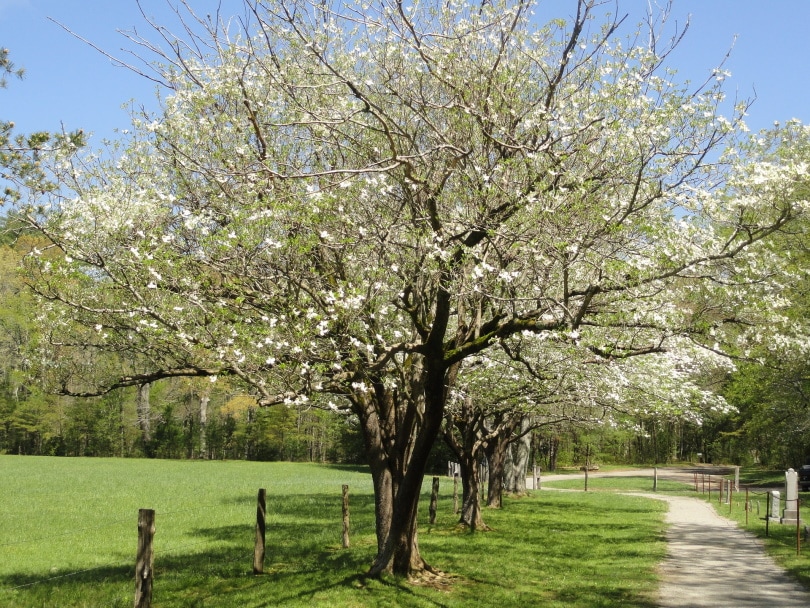
Dogwoods make welcome additions to any landscaping where you want a medium-sized tree with pretty flowers. The wood has manufacturing uses, but the genus Cornus is the source of many cultivars, particularly the Flowering Dogwood. Wild examples produce a valuable food source with tasty berries for many wildlife species.
17. Cherry
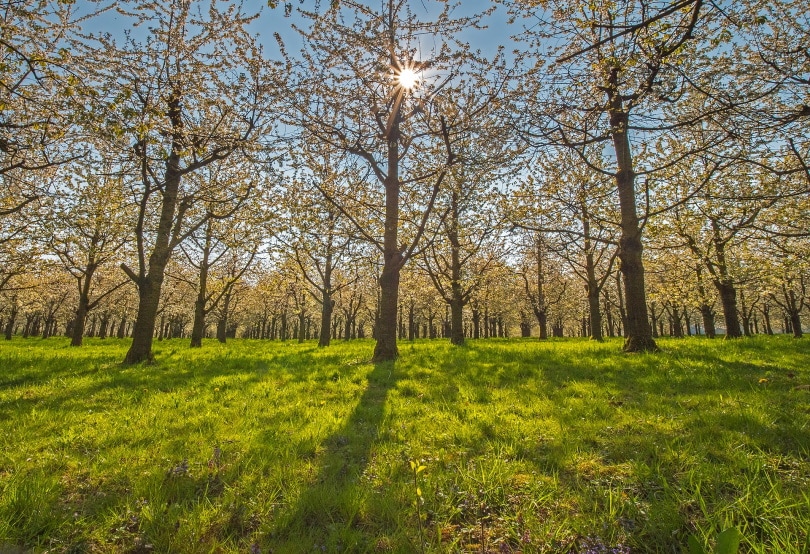
Several smaller groups of species in the Prunus genus exist, all producing fruits of varying values to people and wildlife. There are also many cultivars grown for different reasons. The fruit is the obvious choice. Its wood also plays an essential role in smoking and grilling, adding an aromatic, sweet flavor to foods.
18. Walnut
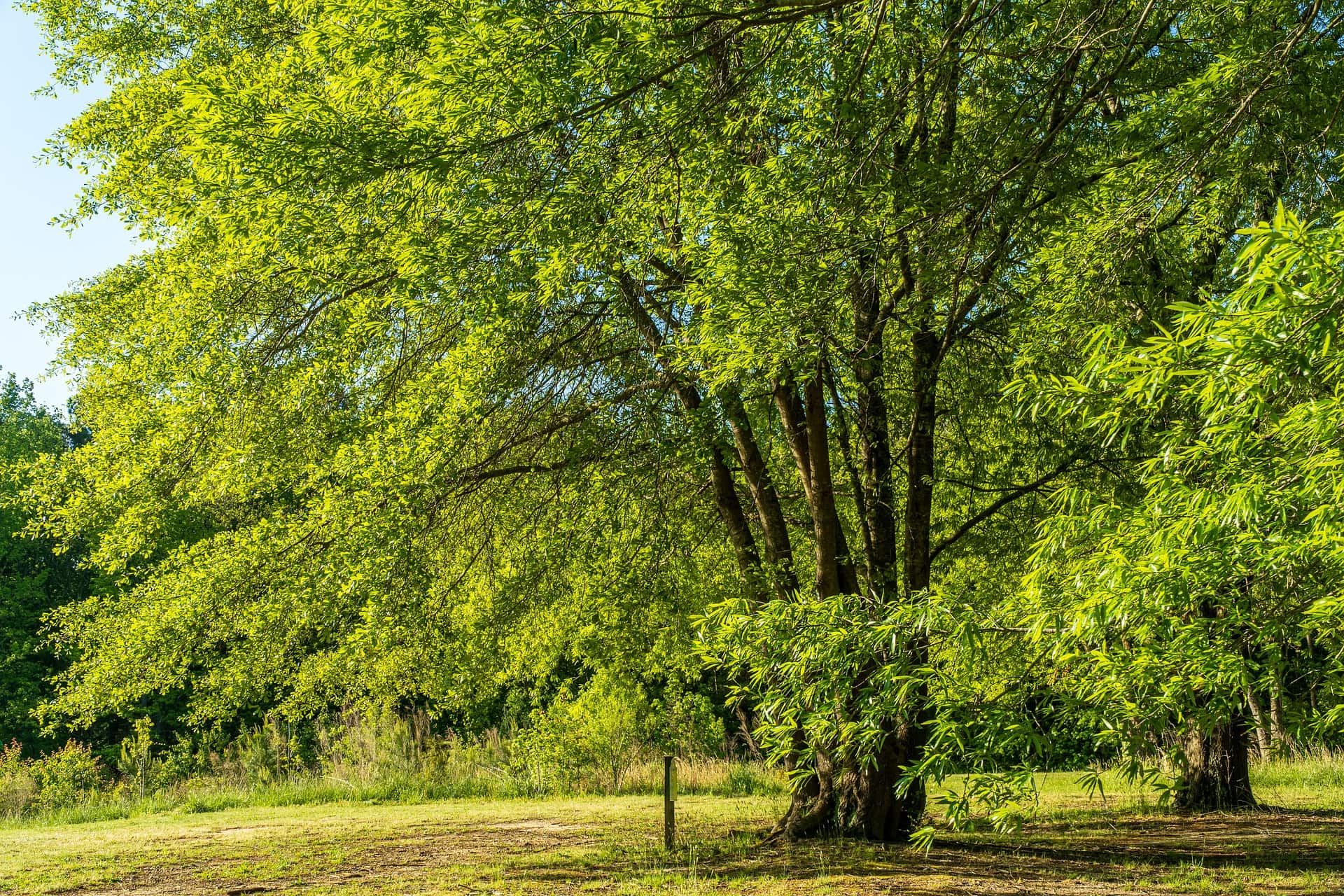
Walnut trees produce some of the most beautiful—and valuable—wood you’ll find. Some individuals even plant them as a long-term investment if they have the land. The husks of the Black Walnut also make an attractive dye. You may know these species for their allelopathy. The trees leach a substance into the soil that limits what plants grow around them as a protective mechanism.
19. Hornbeam
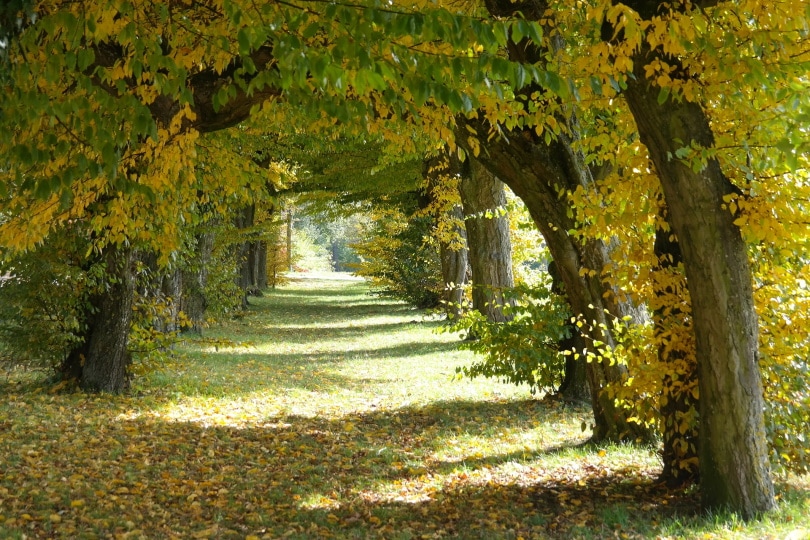
You know you’re dealing with a tree that has strong wood when you see it referred to as ironwood or muscle wood. The American Hornbeam is a common tree throughout the moist forests of the Midwest and Northern Hemisphere. Its main use is for tool handles because of its durability and density. Hop Hornbeam is another widespread variety named for the nut clusters that resemble hops.
20. Catalpa
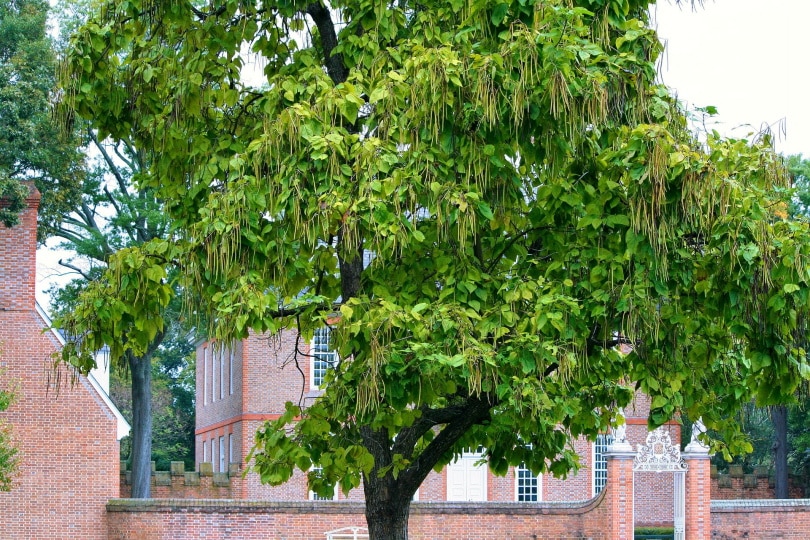
Catalpas are trees you’re not likely to forget once you encounter one. Both North American species have distinctive, elongated fruit pods. That’s one reason you may hear these varieties called Lady Cigar Trees. The other defining trait is the smell of crushed leaves, particularly the Southern Catalpa. While they are ornamental trees, we think they’re messier than they’re worth.
21. Boxelder
The Boxelder is in the same genus as maples. It lacks the positive reputation of the latter with the association of insect pests of its namesake. It’s a fast-growing species that makes its presence known quickly. It often colonizes on disturbed ground, which is how it gains its foothold. Nevertheless, it does have some value as a food source for wildlife and birds.
22. Butternut
The Butternut is in the same genus as walnut trees. The name refers to the fat content of its nuts. The Chippewa had several uses for this species, including as a dye, medical treatment, and food. It’s not particularly long-lived as far as trees go. It’s a lightweight wood used in furniture and as a finishing product.
23. Alder
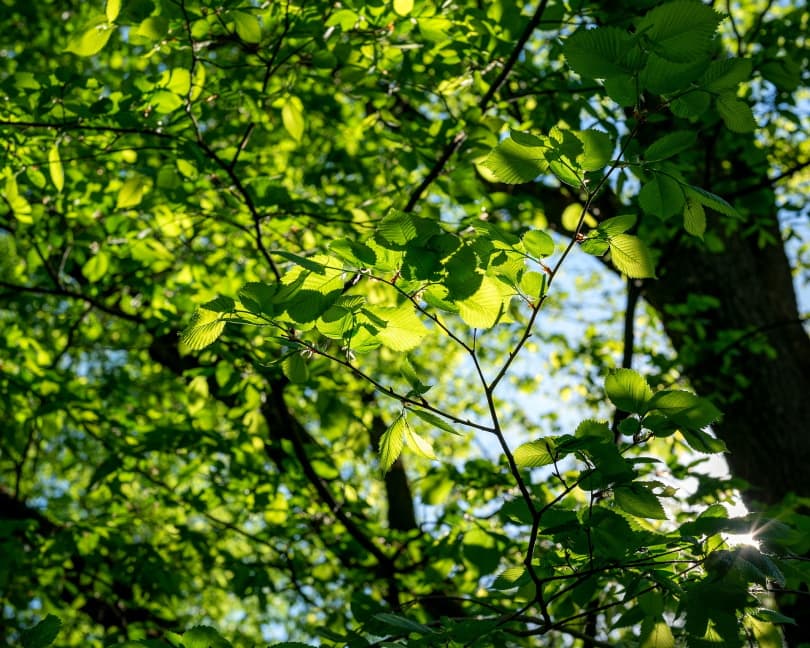
Alders succeed as vital ecological species. They are essential for various beneficial insects, birds, and wildlife. These trees typically live around wetlands of various types. They are also unique as nitrogen-fixing plants that can improve soil quality for other plant species. Interestingly, they also contain salicin, which we discussed earlier as a precursor to aspirin.
24. Tupelo
Tupelos love wetlands and other wet habitats. That explains its genus name, Nyssa, referring to a Greek water nymph. It produces light, pale-brown wood that makes an excellent choice for paper pulp. The trees are also a tasty honey source which adds to its value. It’s a source of decorative wood for waterfowl decoys which is fitting considering their preferred habitat.
25. Birch
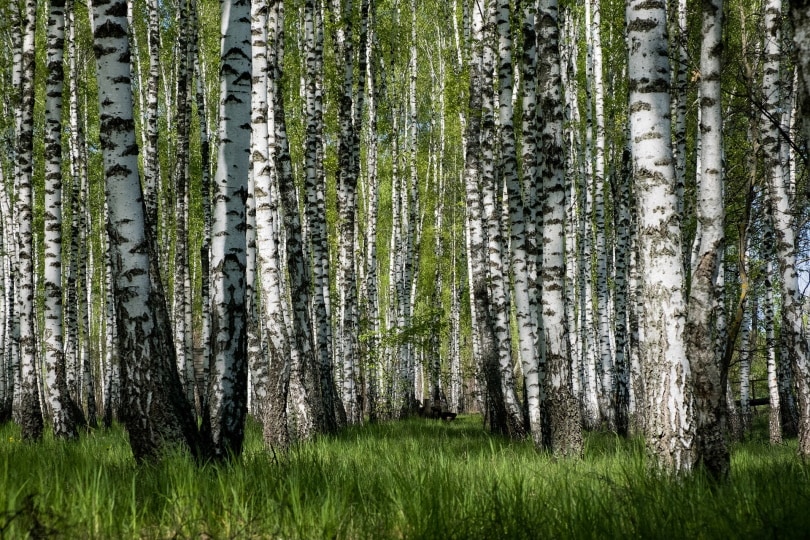
The Betula genus contains several distinctive species, including the Paper Birch and River Birch. The unique bark of some of them makes these trees attractive choices for landscaping. They thrive best in temperate climates. The close-grained wood is a fitting choice for canoes. That’s apt, considering the wetland habitat of some of these species.
Hardwoods vs. Softwoods
Hardwood trees are a diverse group of plants that serve equally varying purposes. Many differ in their value, whether it’s for humans or wildlife. Suffice it to say that they represent the pinnacle of evolution and horticulture with a broad spectrum of cultivars. The latter allows us to enjoy the beauty of hardwood trees in a wide range of settings, even if it’s just our backyards.
Angiosperms or flowering plants produce seeds enclosed in a fruit, like peach or apple trees. On the other hand, gymnosperms lack this type of structure. Instead, the seeds exist on the scales of cones and are not encased. This group is the older of the two, as we discussed earlier. Since we’re considering hardwood trees, you won’t find pines, cedars, or hemlocks on our list.
Identifying Hardwood Trees
The best way to identify any plant or tree is to use a key. This approach begins with broad categories and breaks them down into smaller and smaller groups. The correct identification depends on noting the defining characteristic. For example, we can separate hardwoods from softwoods by leaves versus needles.
From there, you can work through the key from simple or compound leaves. The former is a single one, whereas the latter refers to multiple leaflets such as you’d find on ash trees. Then, you further divide specimens based on the arrangement of the leaves. Opposite ones are paired with one at the same place on either side of the stem. Alternate ones are staggered along their length.
The identification continues with the presence or absence of defining structures, such as hairs, a smooth/toothed leaf edge, and sap. It’s a logical way to ID any hardwood tree you encounter.
Final Thoughts
Hardwood trees are a diverse group of plants that serve equally varying purposes. Many differ in their value, whether it’s for humans or wildlife. However, they represent the pinnacle of evolution and horticulture with a broad spectrum of cultivars. We can enjoy the beauty of hardwood trees in a wide range of settings, even if it’s just our backyards.
- Related Read: 20 Types of Trees in Oklahoma
Featured Image Credit: Pixabay
Looking for more information on different trees? Try:
Contents
